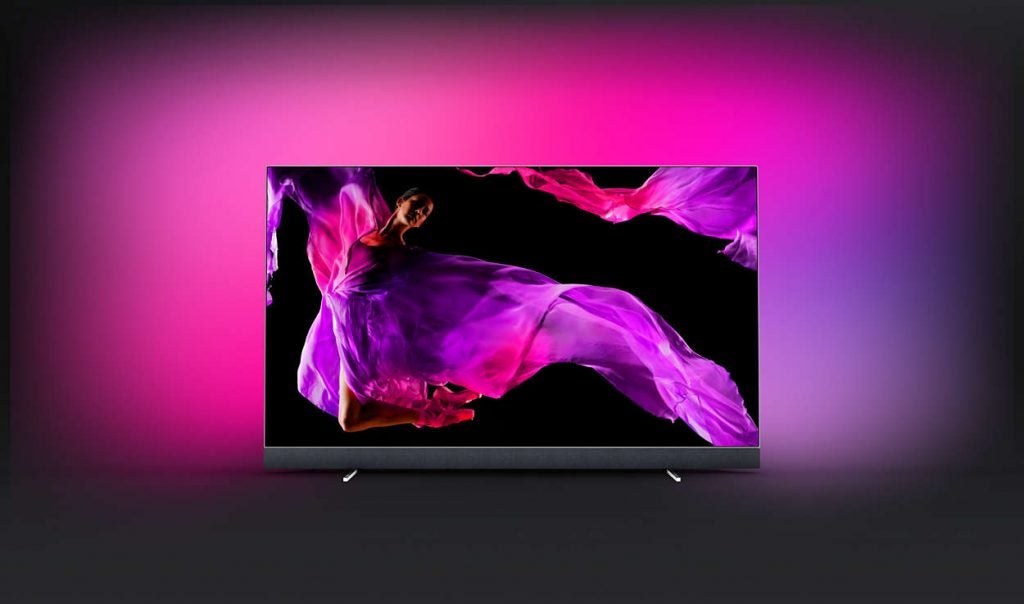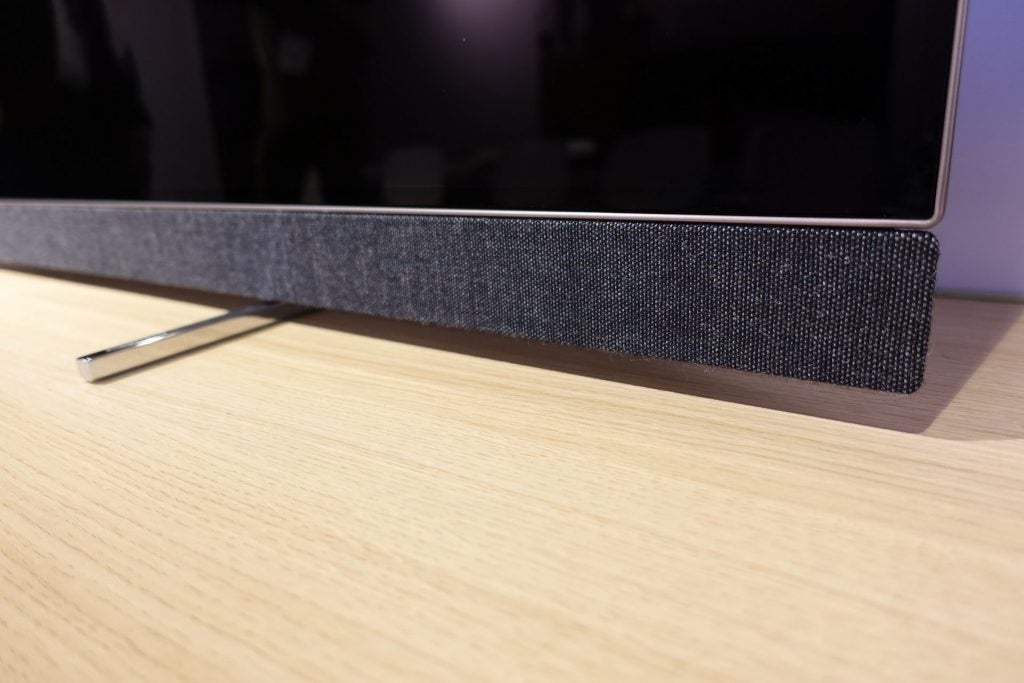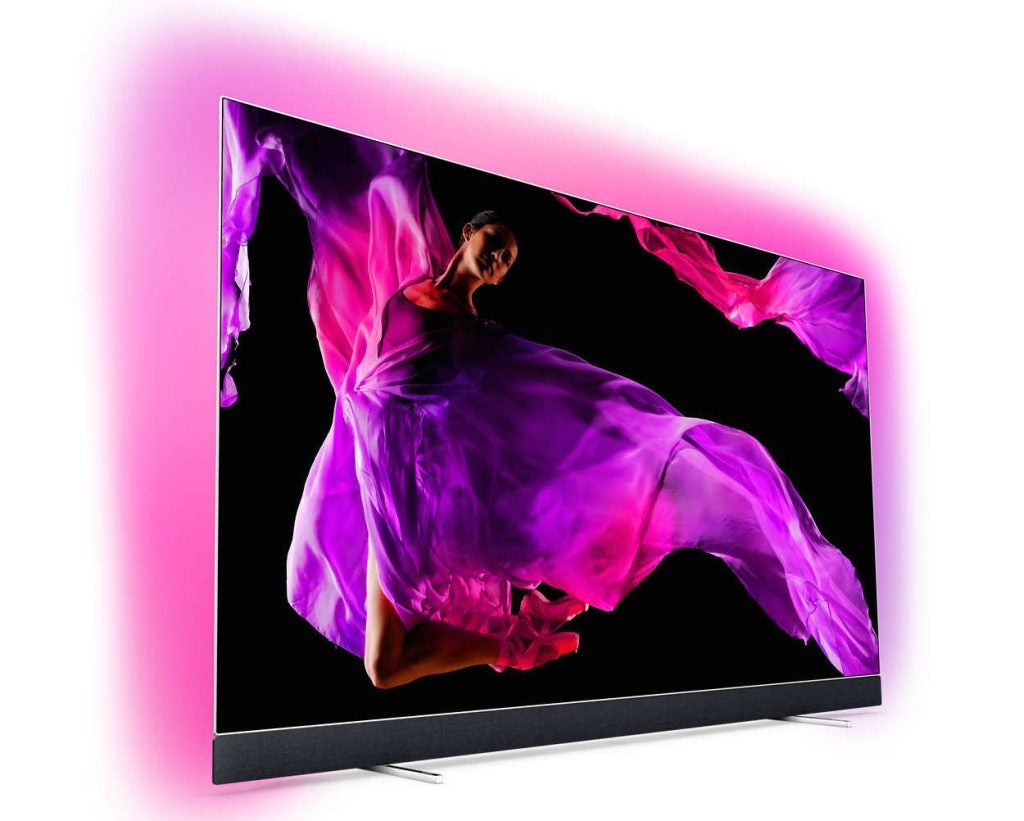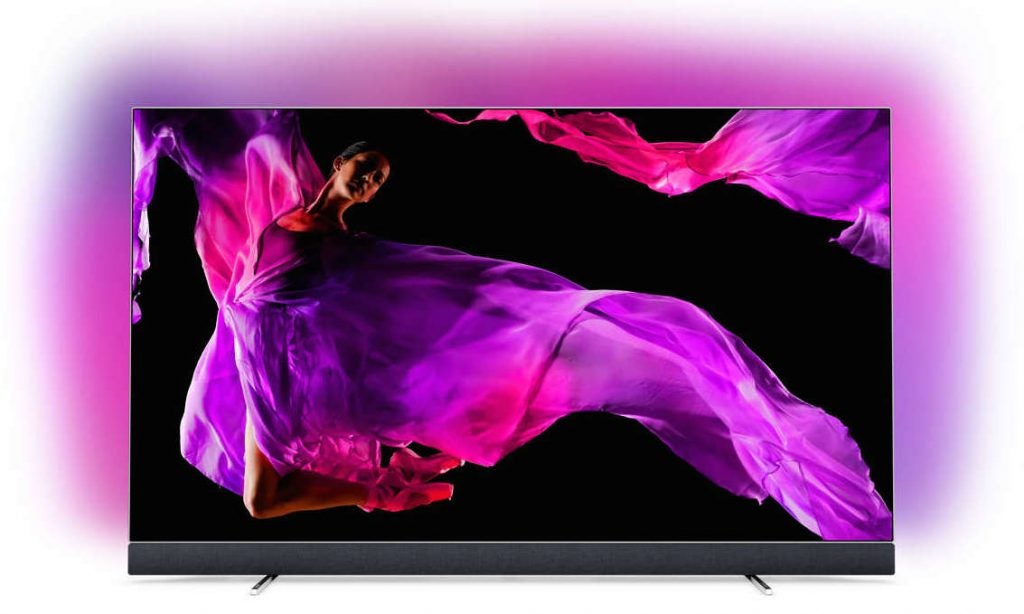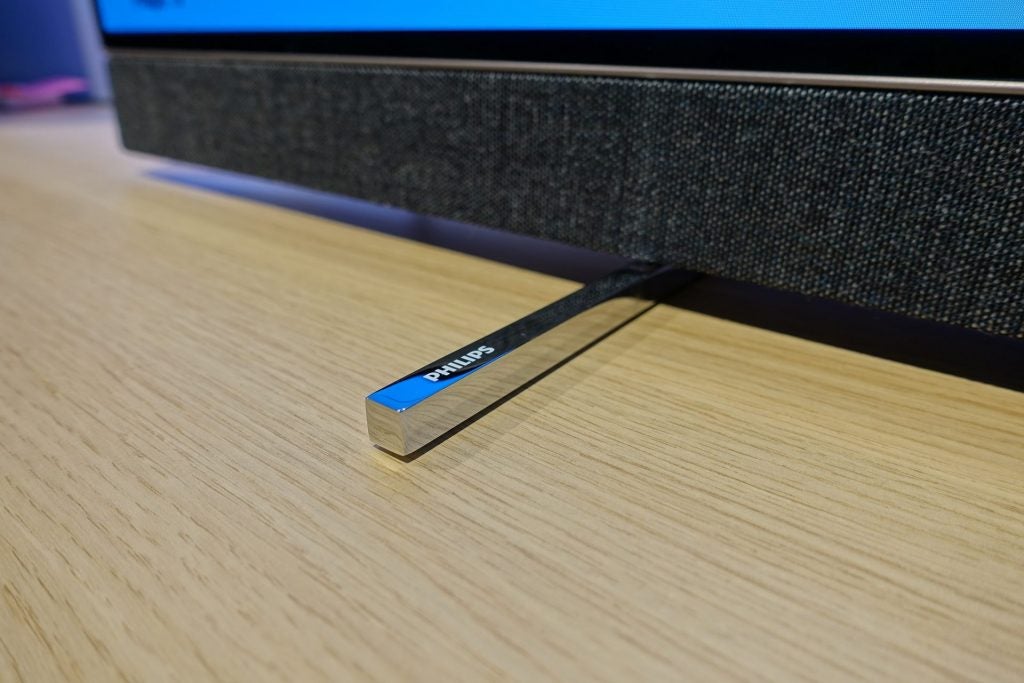Philips 65OLED903 Review
Philips 65OLED903
It looks good. It sounds good. It is good. Very good.
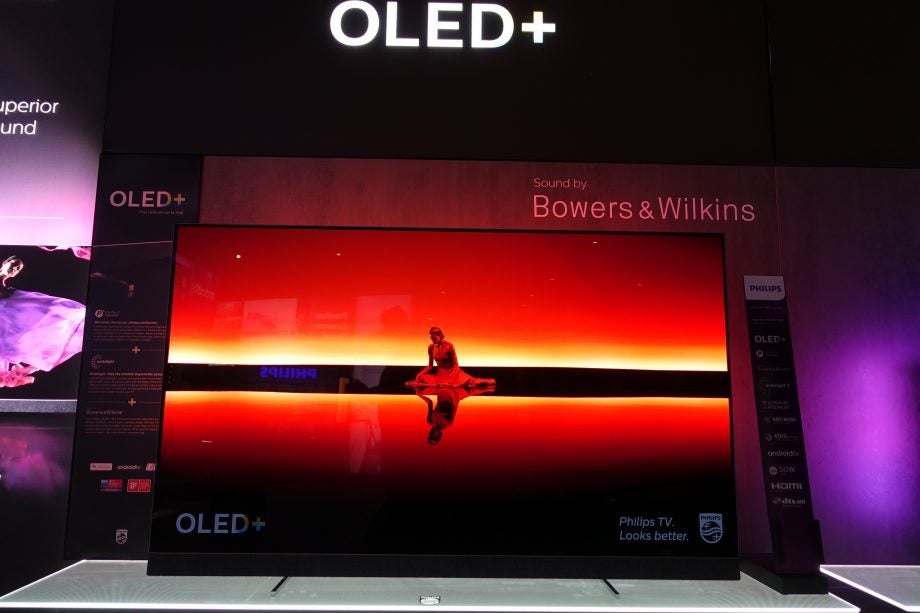
Verdict
Pros
- Exceptionally bright, colourful HDR pictures for an OLED TV
- Outstanding sound quality
- Great, Ambilight-bolstered design
Cons
- Android is currently a frustrating smart system
- Some skin tone issues with certain presets
- Complicated setup and menus
Key Specifications
- Review Price: £3499
- 65-inch OLED screen
- Native 4K resolution
- HDR10, HDR10+ and HLG support
- Philips' P5 processing engine
- Three-sided Ambilight
What is the Philips OLED903?
The Philips OLED903 is a new flagship 65-inch OLED TV. It combines Philips’ latest picture-processing engine with a premium new design (including Ambilight technology) and a built-in sound system designed with renowned British Hi-Fi brand Bowers & Wilkins.
Put all this together and the fast-growing world of OLED TV technology has yet another star performer on its hands.
Philips OLED903 – Design and build quality
The Philips OLED903 is a seriously attractive TV. For starters, Philips’ claim that its new flagship set is ‘razor slim’ is more than idle boasting. The screen frame is so thin you barely notice it, while the top section of its rear is so slender it almost defies belief.
Related: Best TVs 2018
None of this means that the OLED903 feels in any way flimsy, though. On the contrary, the use of plenty of gleaming metal in its structure ensures its opulent looks are partnered with robust build quality.
And then there’s Ambilight. This unique Philips feature appears here in a three-sided configuration, with coloured light erupting from the OLED903’s top, left and right edges.
As usual with Ambilight, you can adjust the intensity of this light, and set its rear-mounted LEDs to track the colour tones in the images you’re watching. Something it does with uncanny tonal and positional accuracy.
The OLED903 sits on two narrow metallic feet that are almost invisible from a front-on viewing position. These feet aren’t tucked right into the screen’s bottom corners so, happily, you won’t need to set the TV on furniture that’s as wide as the screen.
One final eye-catching design element of the OLED903 is its built-in soundbar. This runs the full width of the screen, and tucks snugly between the TV’s bottom edge and cute feet.
Despite its fairly compact size, this speaker carries a remarkable amount of audio tech within its surprisingly slender form. More on this later.
Even the Philips OLED903’s two remote controls are designer items. One features a full Qwerty keyboard on its rear to help with inputting search terms and passwords. The other is just a thin, squared-off metal bar with a handful of buttons etched into its top. You wouldn’t think such a design-driven item could really work – but it does. Certainly, it became my main remote of choice pretty quickly once initial installation was complete – especially since it has a built-in mic so you can speak search data and basic instructions via Google Assistant.
Philips OLED903 – Features
The main reasons someone would want to pick the Philips OLED903 over any other TV in today’s crowded marketplace are its OLED panel technology, Philips video-processing prowess, and Bowers & Wilkins audio system.
The OLED panel means the TV can control the light output of each individual pixel, for outstanding contrast. In addition, theOLED903 uses one of the latest OLED panels, which means it should provide more brightness than previous Philips OLED models.
Philips processing, meanwhile, comes courtesy of a new and improved version of the ‘P5’ platform that made such a positive impact last year with the Philips 55POS9002.
This takes its name from the way it works on the five pillars of picture quality: source detection/optimisation, colour, contrast, motion and sharpness. As with last year’s P5, it manages to integrate nearly 30 stages of image processing onto a single chip. This means processing is more efficient and effective, with each step applied in the most productive order.
There are various areas where Philips has brought the P5 on from last year. Noise reduction has been beefed up for both standard and MPEG noise types. New detail ‘meters’, meanwhile, are on hand to help boost sharpness, along with a new Detail Enhancer circuit. There’s also upgraded colour gamut mapping, as well as a flurry of new tools for boosting contrast. These include a wonderfully named ‘Sparkle and Darkle’ system for boosting bright peaks during HDR viewing.
Arguably the biggest step forward for the P5 engine, though, is Perfect Natural Reality. This is a new system for converting standard dynamic range content into HDR using object-based processing. In other words, it breaks the picture down into different local elements so that the HDR ‘expansion’ can be applied more effectively, rather than just upgrading the picture uniformly.
The OLED903’s built-in soundbar, meanwhile, has been completely reworked and retuned by B&W from the system that Philips’ own engineers originally designed for the set. New materials and enclosures deliver 50W of output in a 2.1-channel configuration via two titanium dome tweeters, two glass-fibre cone mid-drivers, and a dual passive radiator woofer.
The OLED903’s soundbar is really the only big difference between this £3499 model and the £2999 65OLED803 (which we’ll be testing soon). So you can see how much Philips thinks its flagship set’s audio performance is worth.
Looking at other key features, Ambilight is always a draw for many. The OLED903adds support for the HLG and HDR10+ HDR formats to the HDR10 industry standard, too. However, support for Dolby Vision is still lacking.
Connectivity on the OLED903 is middling to good. There are four HDMIs, three USBs and the usual wired and wireless network options. However, only two of the HDMIs support full-bandwidth 4K HDR up to 60Hz. HDMIs three and four only support 4K HDR up to 30fps.
As with many of Philips’ recent TVs, the OLED903’s smart features and interface are provided by Android TV. This isn’t particularly good news. The current Android approach continues to feel cluttered, low on customisation options and not focused enough on what TV users (rather than smartphone users) want.
It also feels a bit buggy, causing the occasional crash. Philips’ handling of it does feel more stable than Sony’s, though. Plus, it seems to cause less slow-down in the TV’s setup menus than it does with Sony TVs.
Apparently, the OLED903 will get new and much more intuitive Android interface firmware later in the year.
Philips OLED903 – Setup
As usual with Philips TVs, the OLED903 is stuffed to bursting point with picture setup options. And you’ll want to familiarise yourself with these if you want to consistently get the best from the TV.
That said, while the OLED903 continues to follow Philips’ ‘way’ of pushing its processing hard out of the box, it’s a bit less in need of extensive tweaking than previous models.
In terms of presets, I’m going to raise eyebrows by suggesting you consider sticking with its Vivid picture mode. This showcases the P5 processor running at pretty much full-steam, and on past Philips TVs would have left the picture looking overly processed and artificial.
Thanks to big improvements in the latest P5 noise reduction and motion enhancement processes, though, there are far fewer unpleasant and unwanted processing side effects to worry about now than on previous Vivid modes.
What’s more, the Vivid setting avoids the skin tone issue visible with the other presets – even the Movie and, ironically, Natural ones. I’d recommend reducing Vivid mode’s Colour setting to 68 and the Colour Enhancement setting to Mid rather than Max.
The Movie mode setting turns off most of the P5 processing if you find the Vivid mode too processed. But it seems a bit odd to want to turn off a lot of the processing that’s really one of the TV’s biggest selling points. Especially since it will result in a much duller, flatter image that also contains HDR colour banding.
The Standard mode is a decent compromise between the two – but, oddly, isn’t available when watching native HDR movie content over HDMI.
Other settings you may want to tweak include the noise-reduction systems. While they’re hugely improved, some may still find them a bit over-enthusiastic when running on their highest settings. I’d also set the Motion mode to Movie when watching, well, Movies. This delivers a more filmic look than the other options, and avoids unwanted processing side effects. It does leave vertical pans looking a bit billowy, though.
I’d also recommend turning off all Eco features (including the light sensor), and setting the TV’s Contrast Mode to Best For Picture.
Finally, make sure you set the Game mode on when gaming to reduce the input lag to a seriously respectable 22ms.
Philips OLED903 – Performance
For sheer ‘wow’ factor, the Philips OLED903 is the best OLED TV yet. It crushes all of its OLED competition in three key ways.
First, it makes HDR images look much more dynamic. For instance, average brightness levels seem unusually aggressive, without dimming as much under stress as we’ve seen with some other OLED TVs.
However, what’s really hard to fathom is how intense brightness peaks in HDR pictures look versus rival OLEDs. Running the same sequence of cars in the desert in Mad Max: Fury Road side by side on the OLED903 and an LG OLEDC8, the sun’s reflections on metal look remarkably brighter and more luminous on the Philips set. Even though the OLED903’s measured peak brightness (on a 10% white HDR window) of 790 is actually slightly lower than that of the LG OLED.
Intriguingly, though, the OLED903 does momentarily hit more than 900 nits when the test signal is first fired in.
Philips’ processing also kicks colour up a gear or two. Saturations look rich and full (the set is claimed to cover 99% of the so-called DCI colour spectrum used in digital cinemas). Also great to see is how much more subtle toning there appears to be in the Philips picture. This is particularly obvious in the colour blending in the sky, and the different shades of desert sand.
When it comes to sharpness, there’s so much texture and clarity in the Philips OLED903’s native 4K playback that it makes other 4K TVs look like they’re barely performing above HD. Or, it makes the OLED903 look like it’s working at something nearer 8K!
In truth, of course, there aren’t any more pixels in the OLED903 than you get in other 4K TV. But Philips’ processing is so clever that it can, for want of a better description, make those pixels look better.
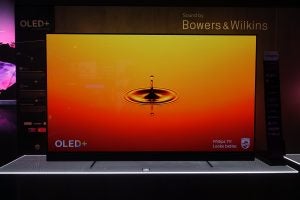
The OLED903’s processing also makes HD images look remarkably 4K like. Moreover, it does this without introducing edge ghosting and excessive ‘fizzing’. The only exception to this is if an HD source is particularly grainy. With this sort of image, the processing can exaggerate the grain a touch. But this isn’t a problem with the vast majority of sources.
Philips’ new Perfect Natural Reality system also does a mostly superb job of converting standard dynamic range content to HDR. It opens up the dynamic range hugely, especially at the peak brightness end of the light spectrum. Yet it does so without making the image look ‘flared out’. On the contrary, colours look more subtle in their toning post HDR upgrade, as well as more vivid.
The exceptional way that Perfect Natural Reality works across the whole image, rather than just focusing on its brightest and darkest areas, also contributes to the sharpness of the HD to 4K upscale.
The final key point about the Perfect Natural Reality system is that it’s mostly exceptionally clever about knowing which parts of the picture it can safely ‘expand’ without causing imbalances and colour issues.
With native 4K content, there’s a tiny trade off for the OLED903’s remarkable sharpness in the appearance of marginally more noise in expanses of mostly monotone colour, such as Mad Max’s light-blue skies. But the sharpness and detail strengths far outweigh the weaknesses.
Of course, the OLED903 also delivers all of OLED’s innate advantages. You can watch it from almost any angle without the contrast or colour taking a hit. It can also deliver its extremely punchy peak whites just a pixel away from its deepest blacks, with no black level compromise or ‘blooming’ around the bright object.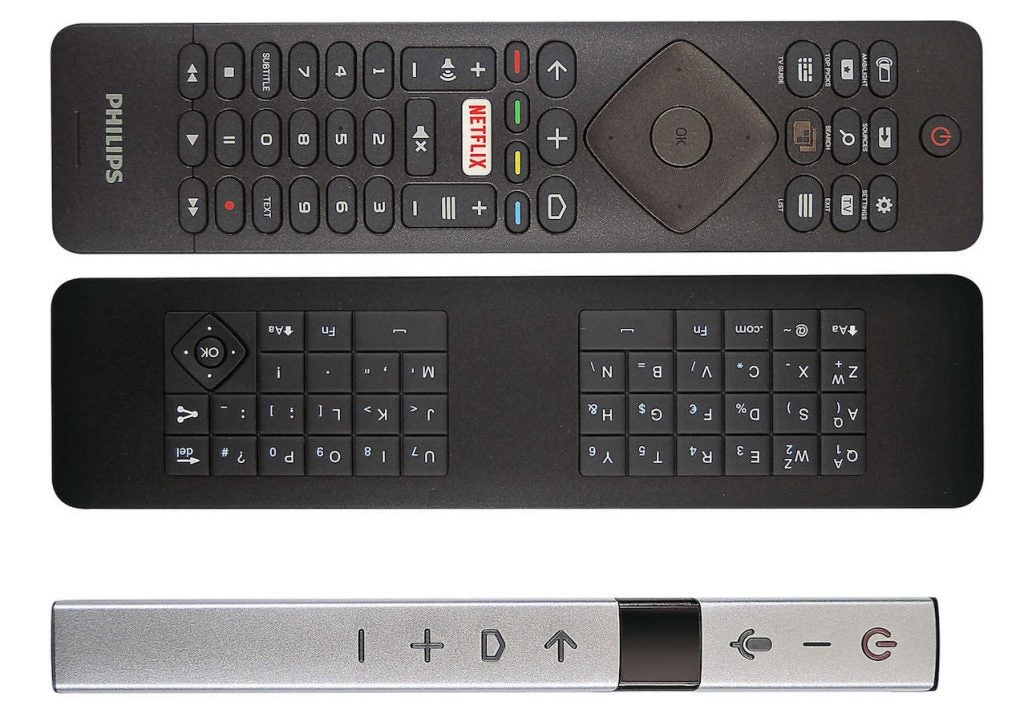
Whatever miracles the P5 engine is achieving to deliver the most HDR picture I’ve seen on an OLED TV, there are one or two issues to report.
First, as noted in the Setup section, skin tones (and some similar fodder, such as sand) can look unnatural with some of the TV’s presets. I didn’t find this easy to fix, without compromising other aspects of the picture. This is one reason I recommend using the Vivid preset as your set-up starting point.
However, this Vivid preset occasionally seems to flicker, and has a tendency to exaggerate any compression noise that might be in a source. For instance, on occasion the sky in Mad Max: Fury Road on 4K Blu-ray can show exaggerated divisions between areas of tonal difference in the blues and greys, and quite pronounced blocking noise around the edges of these dividing lines. This issue reduces greatly with the other picture presets – but those presets make the picture look much less bright and punchy, and suffer the skin tone issue.
Finally, while Perfect Natural Reality mostly does an excellent job of converting SDR to HDR, on occasion the light-range expansion seems more aggressive than the colour expansion, leaving one or two tones looking a touch flat.
Nevertheless, the Philips OLED903 emphatically deserves the performance section of the review to finish on a high. And its remarkable built-in soundbar lets me do exactly that.
The power this manages to produce from its forward-facing drivers is exceptional. Sound is driven towards you, expanding to fill even large rooms in a way you just don’t get with typical (often rear-mounted) TV audio systems.
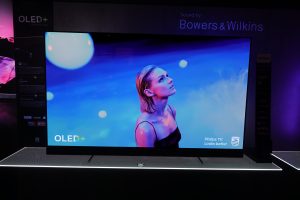
Dialogue sounds richly rounded and beautifully intelligible at all times. It also seems to be coming from the screen, rather than the speaker below the screen. Bass is open and deep, but also punchy and well timed. It latches on to the bottom of the mid-range without any obvious gaps.
At the other end of the audio spectrum, trebles sound clean and lively. They add plenty of detail to film soundtracks and music alike, without sounding harsh or thin. In fact, it’s hard to think of a more musical-sounding TV speaker system. At least since Sony stopped using front-facing, magnetic fluid speakers on its high-end TVs a few years back. This impressive musicality must surely be down to the ‘Bowers & Wilkins effect’.
Wrapping up the outstanding audio performance is an exceptionally dynamic and open mid-range that wouldn’t sound out of place on a good external soundbar. Which is actually pretty important, I guess, given that Philips is essentially charging as much for the OLED903’s built-in soundbar (comparing its price with the step down 803 TV) as you’d expect to pay for a decent external soundbar.
Why buy a Philips OLED903?
If you want the sharpest 4K and brightest, most dynamic HDR pictures the OLED TV world has to offer, the Philips OLED903 is the TV for you. Especially if you also like Ambilight and want built-in audio that rivals many external soundbars.
If you already have or want an external sound system, you could save your cash and get a 65OLED803. As we’ll hopefully be confirming in a review soon, the 803 should deliver the same picture quality as the 903, but for £500 less.
The Panasonic FZ950/952 OLED offers some beautifully refined and natural OLED pictures, but doesn’t deliver HDR so aggressively.
Sony’s AF8 OLED TVs also offer plenty of colour and contrast refinement, but look duller than the Philips set and currently suffer a dimming issue if what you’re watching contains static image elements. The AF8’s system of using its screen to produce its sound delivers a pleasingly large-scale and open soundstage, although it lacks the bass of the OLED903’s audio.
LG’s E8 range is, on paper, a challenger for the OLED903 thanks to its powerful Dolby Atmos-capable sound system. Actually, though, the Philips model sounds much better overall – especially when it comes to avoiding distortions and opening up its scale to handle action scenes.
Verdict
The Philips OLED903 takes OLED technology to picture and sound places I didn’t think it could go. The result is the most brilliantly impactful HDR pictures the OLED TV world has delivered to date, accompanied by an audio performance that wouldn’t sound out of place on a good separate soundbar.
How we test televisions
We test every TV we review thoroughly over an extended period of time. We use industry standard tests to compare features properly. We’ll always tell you what we find. We never, ever, accept money to review a product.
Trusted Score
Features
| Size (Inch) | 65 |
| Display Type | OLED |
| Max. Resolution | 3840 x 2160 |
| Full HD 1080p | Yes (actually 4K) |
| Digital Tuner | Yes |
| Freeview HD | Yes |
| 3D Ready | No |
Connectivity
| HDMI | 4 |
| Component | 1 |
| Composite | 1 |
| Ethernet | Yes |
| WiFi | Yes (built in) |

